#Naval Fleet Exercise
Text
youtube
#militarytraining#youtube#Defense Cooperation#International Cooperation#Naval Drill#Naval Fleet Exercise#TRADEWINDS 24#Naval Exercises#Passing Exercise#Sea#Naval Maneuvers#French Navy#Naval Operations#Naval Forces#Naval Vessels#Naval Fleet#Military Training#Naval Operations Exercise#Naval Training#Maritime Security#Military Exercise#Navy Ships#Youtube
1 note
·
View note
Text

"Double-O Day Aboard USS NEW YORK (BB-34)"
"A unique angle view during annual inspection of men aboard USS New York, anchored off Hawaii during combined Army and Navy manoeuvres."
Photographed on February 29, 1932 during Fleet Problems XIII.
World Wide Photos: LOS-12081
#Leap year#USS New York (BB-34)#USS New York#new york class#dreadnought#battleship#warship#ship#February#1932#Hawaii#Fleet Problem XIII#Fleet Problem#exercise#naval exercise#united states navy#us navy#navy#usn#u.s. navy#interwar period#my post
15 notes
·
View notes
Text
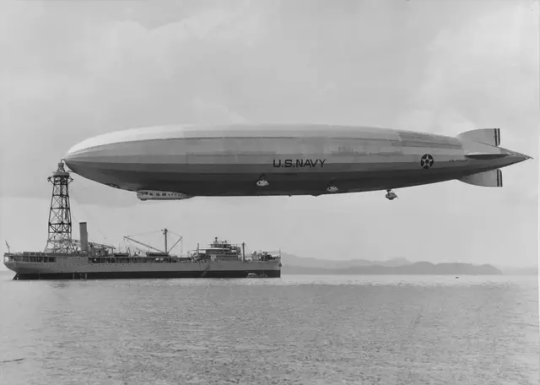
The Zeppelin Company-built airship USS Los Angeles (ZR-3) hovers moored to USS Patoka (AO-9), off Panama during US Naval exercise “Fleet Problem XII”, February 1931.
55 notes
·
View notes
Text
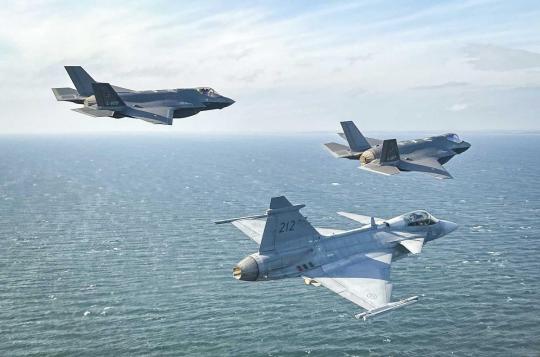
IMAGES: Swedish and F-35 Danish Gripen perform first inter-ally exercises of 5ª generation
Fernando Valduga By Fernando Valduga 15/03/2024 - 18:16in Military
For the first time as NATO Allies, Danish F-35 fighters and Swedish JAS39 Gripen fighters flew air combat training exercises in Danish airspace on March 11 and 13.
The training missions showed close military cooperation between the Danish and Swedish air forces and also demonstrated efforts to integrate and interact with different generations of fighters in the Nordic countries. The exercises were mainly conducted in separate training areas on the waters of Kattegat. They consisted of one-on-one fighter maneuvers and coordinated flight of Danish F-35s from the Skrydstrup Fighter Wing and two JAS39 Gripen from 'Blekinge Flygflottilj' in Ronneby, near Karlskrona, in southern Sweden.

Cooperation is based on a mutual interest of the two nations through the Oresund, making use of experience and skills to strengthen the combined power of air warfare.
"Because we are neighbors and close allies, using each other's capabilities not only provides great training value for pilots and personnel, but is also visible proof of the ambition to be able to operate effectively together," says Major General of the Danish Air Force, Jan Dam.
The training exercises involving the JAS39 produced by Sweden and the F-35 produced by the United States highlight the need to ensure that existing and new combat aircraft fleets are able to cooperate and interact on the modern battlefield.
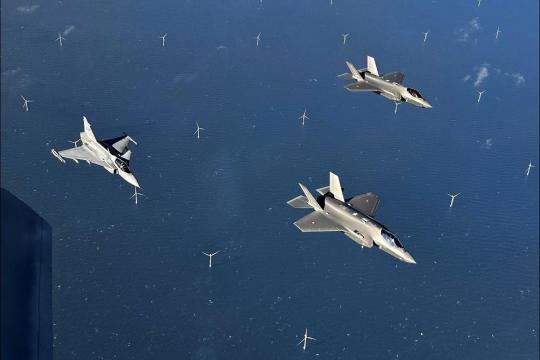
"The Gripen and F-35 belong to two different generations of combat aircraft and therefore have different characteristics to contribute to the battlefield. As a fifth-generation combat aircraft, the F-35 has the special ability to collect and process huge amounts of data, which it can later share with other allies and actors," explains Lieutenant-Colonel Casper Borge Nielsen, head of the Combat Flight Department of the Allied Air Command.
He went on to say that the integration between the F-35 and the Gripen increases the combined operational capabilities, because the F-35 is able to generate and share an unprecedented situational image, from which the Gripen can also benefit. On the other hand, the Gripen represents an advanced combat aircraft that brings more firepower to combat. This will benefit both fifth and fourth generation combat aircraft and, in a broader perspective, will give land and naval forces the opportunity to operate with more freedom and efficiency.

"Performing this type of exercise flying with another type of aircraft provides different challenges and experiences than when it is normally practiced against our own units," said Lieutenant-Colonel Erik Almquist, Commander of the 172º Swedish Air Force Fighter Squadron. “Cooperation with Danish pilots has been very easy and uncomplicated. The biggest challenge was to decide whether we should speak English or Danish/Swedish on the phone during the briefing and debriefing,” he said, adding that on the air, radio communications are made, of course, in English. "This week's exercises were the beginning of an increased cooperation where the proximity of the divisions in Skrydstrup and the simplicity of the cooperation provide good conditions for us to develop and strengthen our ability to fight together as a 'Nordic Air Force'," he concluded.
"We found our Swedish colleagues in Danish airspace to fly Basic Fighter Maneuvers (BFM), also known as 1-on-1 air combat training," says TRI, one of the Danish F-35 pilots of the Skrydstrup Fighter Wing in southern Jutland. He added that this creates different requirements and challenges when training against an unknown opponent. "Most of the time, we fly BFM against our own F-35 pilots. The Gripen and the Swedish pilots fly differently, so a 1-on-1 match against them is a professional challenge. We can test elements of our own tactics that we don't normally do. It's amazing! And of course it's great to meet the Swedes in Denmark," concluded TRI.

In the fall of 2023, Denmark received the first four F-35 fighters on Danish soil, while six aircraft are still located in the US for training flights. In total, Denmark has invested in 27 F-35 fighters, of which the remaining 17 are expected to be delivered in the coming years.
Tags: Military AviationF-35 Lightning IIFlygvapnet - Swedish Air ForceJAS39 GripenNATO - North Atlantic Treaty Organization
Sharing
tweet
Fernando Valduga
Fernando Valduga
Aviation photographer and pilot since 1992, he has participated in several events and air operations, such as Cruzex, AirVenture, Dayton Airshow and FIDAE. He has works published in specialized aviation magazines in Brazil and abroad. He uses Canon equipment during his photographic work in the world of aviation.
Related news
HELICOPTERS
Indian government signs contract with HAL to buy 34 Dhruv light helicopters
15/03/2024 - 16:00
MILITARY
Shield AI will integrate Artificial Intelligence pilot in the Kratos BQM-177A drone.
15/03/2024 - 14:00
AIR SHOWS
It's less than a month before FIDAE 2024 opens its doors to the world
15/03/2024 - 13:00
MILITARY
Canadian Air Force received its first CE-145C Vigilance
15/03/2024 - 11:30
BRAZIL
Brazilian Air Force starts study to activate a second squadron of F-39 Gripen fighters: the "Pacau"
14/03/2024 - 21:30
EMBRAER
Embraer and ST Engineering sign agreement on the C-390 aircraft in the Asia-Pacific region and South America
14/03/2024 - 19:59
40 notes
·
View notes
Text

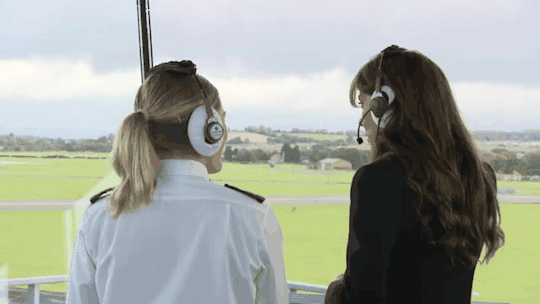
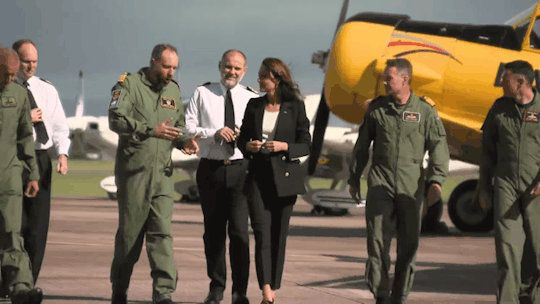
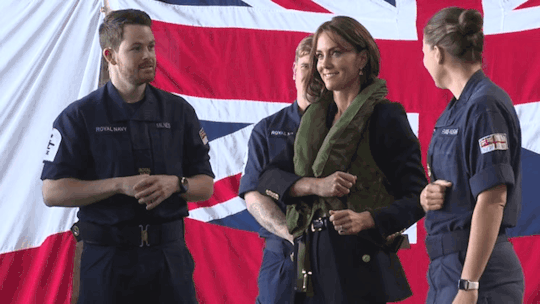






THE PRINCESS DIARIES ♚
18 SEPTEMBER 2023 || ROYAL NAVAL AIR STATION YEOVILTON
The Princess of Wales paid a visit to Royal Naval Air Station Yeovilton in her role as the Commodore-in-Chief of the Fleet Air Arm.
During her visit Catherine met and conducted training exercises with the Royal Navy Survival Equipment (SE) Technicians. She also met service personnel and viewed - the Merlin MK4 and the Merlin MK2.
The former is deployed by Royal Marine Commandos globally to provide disaster relief. While the latter is an Anti-Submarine Warfare platform used for a variety of activities including tracking submarines, supporting disaster relief operations and providing training for the next generation of engineers and aircrew.
Catherine also spent time in the Air Traffic Control (ATC) tower where she visited the Visual Control Position to meet with staff and view the aircraft operating in the airfield. She also visited a hangar to engage with personnel and hear about different operations within the Fleet Air Arm.
The Princess of Wales also visited the Wildcat Training Centre, to meet the loading team who are trained to fit a variety of weapons to the Wildcat MK2 helicopter.
This was Catherine's first engagement in her new role.
#princess of wales diaries#princess of wales diaries 23#princess of wales#the princess of wales#princess catherine#catherine wales.#my gifs#royaltyedit#royalty gifs#royalty edit#18092023#british royal family#british royals#royalty#royals#brf#kate middleton#royal#catherine middleton#duchess of cambridge#british royalty#gifs#RNASYeovilton23
81 notes
·
View notes
Text
🔅Wed morning - ISRAEL REALTIME - Connecting to Israel in Realtime
🔻3 rounds of rockets at northern towns, including Rosh HaNikra. 1 round of anti-tank fire.
🔹BIDEN SAYS.. “Hamas has now become the only obstacle to achieving an immediate ceasefire and providing aid to civilians in Gaza.” Amit Segal notes: “At the beginning of the war, Biden supported the overthrow of Hamas. Now the overarching goal is the cessation of fighting and aid to the Gazans.” (( And we add: ‘nor security for Israel. Hamas’s ‘use our own population as human shields and examples for Western pity’, fully successful. ))
🔹BAD ISRAELI POLITICS.. Opposition leader MK Lapid (Yesh Atid), after traveling to the US without coordination with the Israeli government, is now traveling to the UAE for “meetings”. War Cabinet member and leader of National Unity MK Gantz will meet in the afternoon with US Secretary of State Anthony Blinken, together with War Cabinet member MK Gadi Eisenkot and with Israeli Ambassador to the U.S. Mike Herzog at Kibbutz Yad Mordechai.
🔹ECONOMY - RISE IN DAIRY PRICES.. Tnuva announced an increase in the prices of its price-controlled dairy products by a rate of 4.48% starting tomorrow. In addition, the prices of Tnuva's other dairy products and Sunfrost, Delicacies, Mama Chicken and Tirat Zvi products will be increased after Independence Day.
🔹NEW PROTEST - ATTACK NOW.. "The road to victory passes through Rafah”, hundreds of bereaved families of fallen IDF soldiers will establish the "Heroic Encampment in Jerusalem" opposite the Knesset to protest for VICTORY NOW.
🔹AID PROTEST.. The Allenby crossing was blocked to the movement of aid trucks by activists of the "Order 9" movement, despite a closed military area order imposed on the place, stopping hundreds of trucks headed from Jordan to Hamas.
🔹HOUTHIS REACHING FARTHER.. with an attack 600 km from Yemen in the Indian Ocean on a cargo ship owned by an Israeli. The question raised: how did the Houthis manage to carry out a naval attack from a long distance on a moving target, without having a naval fleet or satellites? Who’s providing targeting data?
🔹HOUTHIS TELL AMERICANS OFF.. The Houthis again rejected American incentives and offers in exchange for the cessation of attacks in the Red Sea and the Gulf of Aden (and now the Indian Ocean). The Houthis sent messages to the United States and Britain through intermediaries warning of "severe retaliation" if their attacks against Yemen continued.
🔹EMEK HULA - DRILL.. an extensive military exercise is expected to take place in the Emek Hula area - as part of which a lively movement of forces will be felt. It’s a DRILL.
🔹US TO BEGIN ACCEPTING GAZA REFUGEES? A CBS news report based on an internal document between various government agencies: according to the document, the Biden administration is considering transferring to the US a group of Gazans from the Strip who will be accepted as refugees, including an option for permanent status.
🔹UK - IRAN GUARDS NOT TERRORISTS.. British Foreign Minister David Cameron told the House of Lords in London that defining the Iranian Revolutionary Guards as a terrorist organization "is not in Britain's interest”.
🟡 CEASEFIRE - GAZA..
.. Qatari Al-Arabi Al-Jadid newspaper from Egyptian sources: an Israeli delegation that included senior officials from the Shin Bet, the IDF and the Mossad arrived in Cairo for an urgent visit that lasted about 3 hours. They received a revised document containing the comments and corrections that Hamas demanded be added. ROTTER denies.
.. Security official: If the answer doesn't come by tomorrow evening, we won't wait any longer.
17 notes
·
View notes
Text
Whenever I've contemplated the recent Canadian MAID policies, my mind has inevitably wandered to Robert W. Chambers' justly revered weird tale "The Repairer of Reputations" and the Government Lethal Chambers that are such a key thematic element therein. I am not going to imply that the Canadian health services have fallen under the sway of the Yellow Sign (although...), but I've always noticed in reading and listening to other moderns' response to the story that there's important period context that gets largely missed. This is understandable - most people haven't read nearly as many fin-de-siècle and Edwardian era 'Scientific Romances' as I have, for the good reason that most of them are really quite bad.
But without historical context, it's easy to miss exactly what the alternate future New York City that the story may or may not be set in represents. It's a whole collection of relatively common Progressive era tropes representing peoples' hopes and fears about the immediate future, arranged in an optimistic (even Utopian) key. The obsession with civic beautification, the gleaming fleets of battleships that are almost an extension of the "good architecture [that] was [everywhere] replacing bad," the optimistic hope that race problems could be settled for all times and peaceably without any then-unseemly 'mixing' (Indian scouts! an "independent negro state of Suanee"! checking of immigration!), a militarism that's as much about pomp & love of regimentation as about actual wars, the "colossal Congress of Religions" that "laid [bigotry and intolerance] in their graves" and "began to draw warring sects together", a love of orderly centralization... This is all the sort of stuff that moderate, bien-pensant Progressives and Fabians of Chambers' day would have cheered on. Even the "war with Germany," involving an unlikely occupation of the Virginia coast, is an optimistic take on the Invasion Story subgenre that was becoming common at the time (the scars it left "had been forgotten in the joy over repeated naval victories, and the subsequent ridiculous plight of General Von Gartenlaube's forces in the State of New Jersey.") It's all of a piece, an expression of boundless Columbian Exposition optimism and faith in Reason and Progress to bring forth an Earthly Paradise.
And so are the Lethal Chambers. They are reasonable, and graceful, and beautiful, solutions to the problem of hopelessness. Reasonably, why should a person not have a right "to end an existence which may have become intolerable to him, through physical suffering or mental despair"? Too, "the community will be benefited by the removal of such people from their midst." And the Chamber is beautiful, placed in a verdant park, decorated with Grecian columns and marble statues, designed to make one's exit from this world as rationally elegant as possible. It's all done discreetly, in the best possible taste.
This is why the story is given this whole setup, why it begins with what seems today to be a very disorienting bit of archeofuturistic world-building. In the context of this world of rational hopes rationally filled, not only is Castaigne's descent into madness more shockingly out of place, but it also represents an irruption into that world of something else, something old and strange and powerful. There is a reason that Wilde & Castaigne invoke the trappings of the archaic medievalism that the Progressive world sought to do away with forever, and a reason why Wilde deals (or claims to deal) in blackmail and conspiracy. All the flotsam and jetsam that, it was hoped, could be swept away like the old slums, bob inevitably to the surface.
As something of a reactionary, I'm inclined to take a political reading of this - "don't immanentize the eschaton!" as the slogan goes. But, like all really good fiction, "The Repairer of Reputations" is about something deeper than politics. I leave further interpretation as an exercise to the reader.
19 notes
·
View notes
Text
The Cousins: Georgie and Nicky
The future Nicholas II, the future George V and his older brother Albert Victor, Duke of Clarence and Avondale pose for a photo below. All three resemble each other, but the resemblance between George and Nicholas is remarkable.
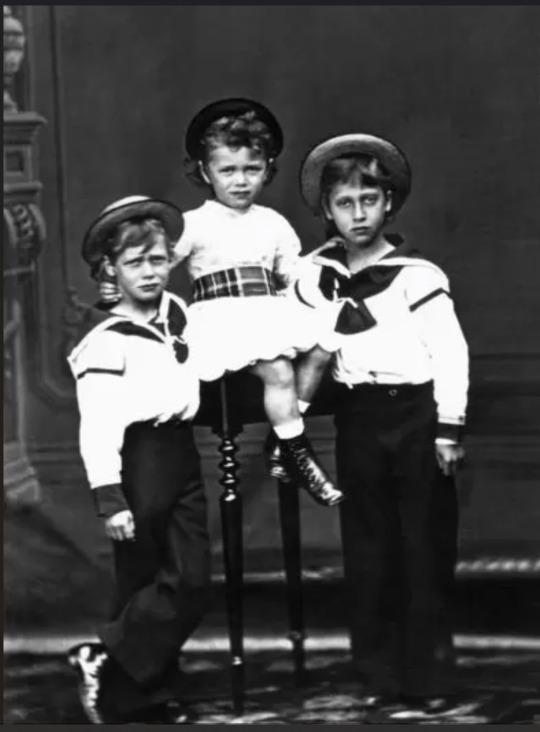
Below, Georgie:
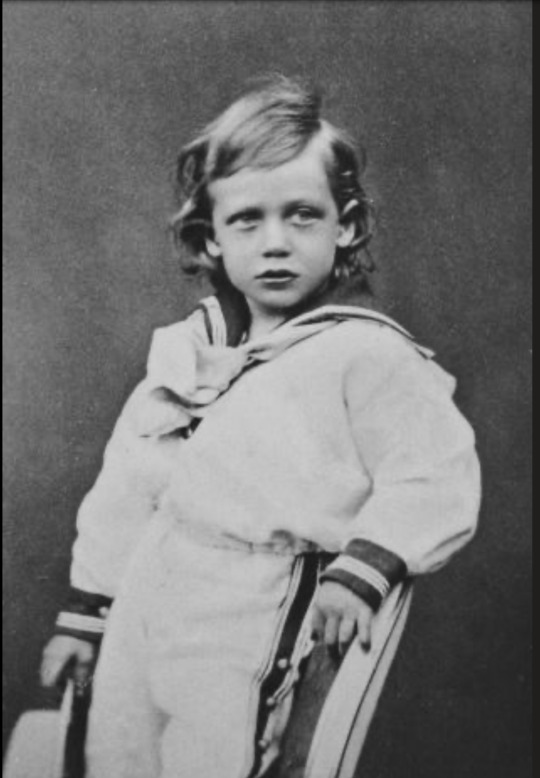
And next, Nicky:
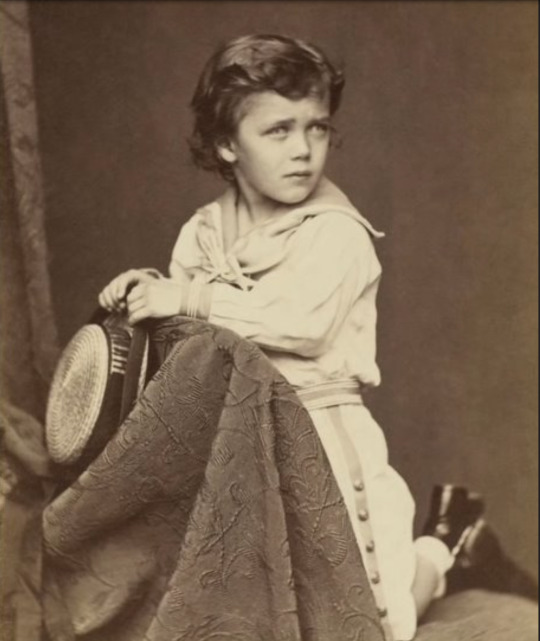
And their mothers, sisters, Queen Alexandra of Great Britain and Empress Marie Feodorovna
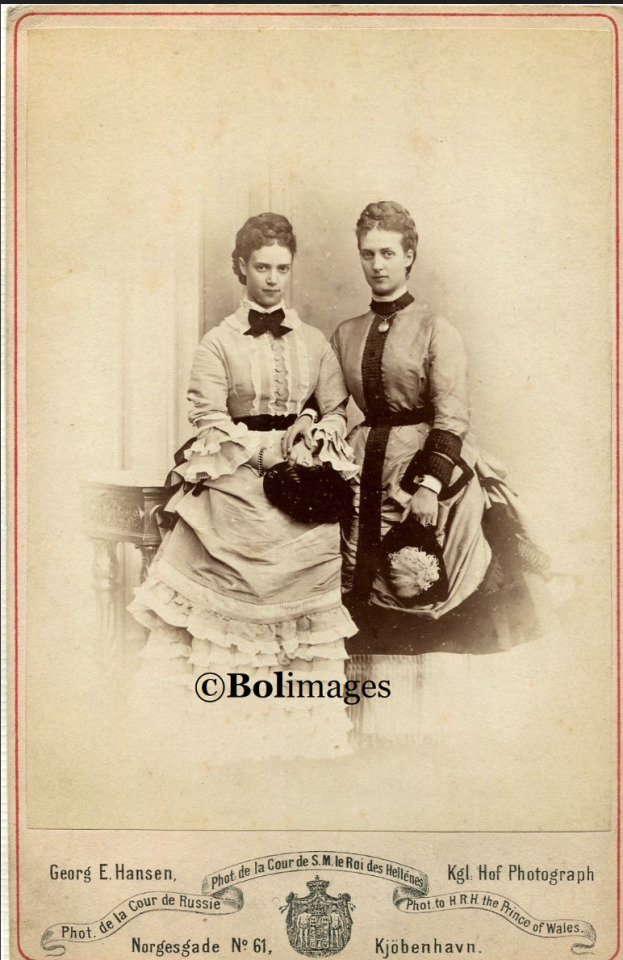
The Cousins: Georgie and Nicky
Their mothers were sisters. They resembled each other but were not identical. Physically, their sons, first cousins, resembled one another more than they resembled any of their siblings and would do so all their lives.
How would Nicholas have turned out if he had received a naval education that took him away from his parents for long stretches of time, as George did? We know that the Danish royal mothers were very loving but particularly possessive (if not oppressive), and Dagmar's exercise of this quality over her sons did not have good results. In addition, Nicholas had to contend with his father as well, who did not seem to like him all that much.
Great Britain benefited greatly from several turns of fate, one being that George was sent into the navy, which allowed him to further develop his innate independence. At that time, he was not heir to the throne yet. The idea of having the first son rule and the second one (should the dynasty be lucky enough to have a proverbial "spare") support the ruler as the "lord of the seas" was not new. Notice Willhelm II and his brother Heinrich, who became the Grand Admiral of the German Navy (and during the reign of Alexander II in Russia, his brother Konstantin was the Admiral of the Russian fleet.)
#russian history#romanov dynasty#imperial Russia#Nicholas II#George V#Queen Alexandra of Great Britain#Empress Maria Feodorovna#Albert Victor
23 notes
·
View notes
Text
So you want to write a TopGun fanfic but know absolutely nothing about the US Navy and don't even know where to start looking.
You're in luck!
Here are all of the links and notes I've acquired while researching for my own TopGun fanfics. I call this my TopGun Fanfic Writer's Reference Sheet/Info Dump. Hope this helps and happy writing! 😄

Differences Between Navy/Coast Guard Officer Ranks and Army/Air Force/Marine Officer Ranks
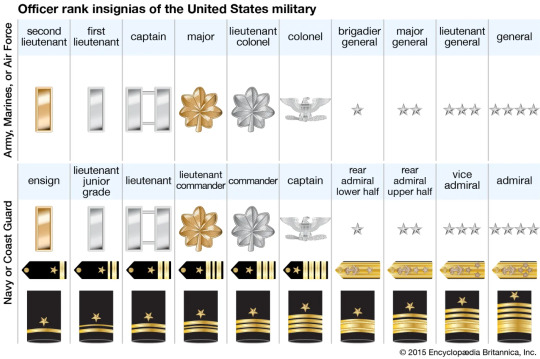
There are two other ranks between a Navy Lieutenant and a Navy Captain
A Navy Captain is NOT the same as an Army/Air Force/Marine Captain
A Navy Captain is equivalent to an Army/Air Force/Marine Colonel
Iceman is an Admiral and as such he would be addressed/referred to as 'Admiral Kazansky' or just 'Admiral' (like what Mav calls him when he goes to visit) and NOT 'Commander'.
Simpson (Cyclone) is a Vice Admiral
Bates (Warlock) is a Rear Admiral Upper Half
US Navy's Website - How To Become A Commissioned Naval Officer
Admissions Information/Steps for Applying for the USNA
Info about NROTC - Naval Reserve Officers Training Corps
Info about Naval Officer Candidate School
A Path To Professional Leadership - Becoming A Navy Officer
YouTube Playlist of 50+ Videos With Information Related To Both Top Gun Movies And The Navy In General
Cmdr. Elizabeth Malecha, a Naval Flight Officer, was the first female graduate of Topgun and that wasn’t until 2001.
Cmdr. Becky Calder was the first female pilot to graduate from Topgun and that wasn’t until 2004.
List of currently active United States naval aircraft
Boeing F/A-18E/F Super Hornet Wikipedia Page
How Do You Earn The Coveted Wings of Gold?
Fights On! Podcast - Ep. 1: Wings of Gold (1:47:51)
Episode one chronicles the path of naval aviators from college graduate through winging and beyond.
Fight’s On! is an eight-episode podcast series about combat aviation training, focusing on how the US takes newly minted Officers and Warrant Officers and molds them into combat aviators able to fight and win in today’s high-tech battlespace.
Told through the stories and experiences of US military aviators in their own voices. Fight’s On! will take the listener on the journey of combat aviators from Initial Flight Training through Advanced Tactical Training and multi-unit exercises, ultimately describing the current and near future systems and programs that will ensure American air dominance into the future.
+Listen on Spotify
+Listen on Apple Podcasts
+Listen on iHeart Podcasts
+Listen on PlayerFM
United States Navy Strike Fighter Tactics Instructor program aka TOPGUN
DoD - TOPGUN: Edge of Aviation
US Navy Stories - Patch Wearers: The Real TOPGUN
Inside The Real TOPGUN Fighter School
The TOPGUN Legacy: Making Maverick with Capt. Brian Ferguson
Aviation Warfare - Overview of Fixed Wing Aircraft from the USNA website
Wikipedia page for the United States Pacific Fleet
Part of the larger Indo-Pacific Command
Garrison/HQ: Naval Station Pearl Harbor
Commander is appointed by the President with Senate advice and consent.
Commander reports to the Secretary of the Navy (administrative), the Chief of Naval Operations (administrative), and the Commander of US Indo-Pacific Command (operational).
Commander term length is approx. 2-3 years.
As of 2011, the Pacific Fleet has authority over:
+ Numbered Third and Seventh Fleets
+ Naval Air Force, Pacific
+ Commander, Naval Surface Forces Pacific
+ Naval Submarine Force, Pacific
Naval shore commands over which USPACFLT has authority:
+ Commander Naval Forces Korea
+ Commander Naval Forces Japan
+ Commander Naval Forces Marianas
List of US Navy Bases - Both Within The US And Abroad
US Navy Careers - Fighter Pilot
Navy Fighter Pilot Lingo
The Fighter Pilot Podcast - Glossary List
The 100+ Most Creative Pilot Callsigns With Explanations
‘Sidewalk,’ ‘Terminally Stupid,’ and ‘Meatloaf’ — How military pilots get their call signs
DoD - Aviator Call Signs: The History & Naming Rituals
Pilot Callsigns - The web's largest collection of callsign stories
USNA - Naval Aviation
In Naval Aviation, captains with sea commands are Naval Aviators or Naval Flight Officers who are commanding officers of aircraft carriers, commanding officers of large-deck air-capable amphibious assault ships, commanders of carrier air wings (CAG), or commodores of functional or "type" air wings or air groups. A smaller cohort outside of sea and shore commands may also serve as astronauts on loan to the National Aeronautics and Space Administration (NASA). [X]
Navy captains who are line officers may also fill senior command and staff positions ashore as Chiefs of Staff/Executive Assistants or senior operations officers to flag officers, or they may hold shore command assignments such as commanding officers of naval bases, naval stations, naval air stations, naval air facilities, naval support activities, logistics groups, specialized centers or schools, or commanders of test wings or training air wings. They may also occupy senior leadership positions on fleet staffs, naval component commands staffs, the staffs of the joint Unified Combatant Commands, the staff of the Chief of Naval Operations (OPNAV), or the Joint Staff. [X]
Promotion to captain is governed by DoD policies derived from the Defense Officer Personnel Management Act (DOPMA) of 1980 or its companion Reserve Officer Personnel Management Act (ROPMA). DOPMA/ROPMA guidelines suggest that no more than 50% of eligible commanders should be promoted to captain after serving a minimum of three years at their present rank and after attaining 21–23 years of cumulative commissioned service, although this percentage may be appreciably less, contingent on force structure and the needs of the service. With very few exceptions, such as Naval Aviator Astronaut and Naval Flight Officer Astronaut, unrestricted line officer captains in the Navy will have successfully completed at least one commanding officer assignment at the commander (O-5) level (an aviation squadron for Naval Aviators and Naval Flight Officers) before being selected for promotion to captain. All those selected to the rank of captain by the U.S. Navy are confirmed by the United States Senate. [X]
youtube
An Idiot’s Guide To What Service Members Are Called In Every Branch
...Or you can just keep calling all the Marines soldiers. They secretly love it.
Have you ever accidentally called a Marine “Soldier?” The look they gave you probably had you fearing for your life.
We know that trying to remember what to call the members of each military branch can get kind of confusing. Never fear! We’re here to help. This video guide will assure that you’re never in danger of being beat up by a Marine again (at least not for this reason).
This is why Navy pilots prefer to be called ‘naval aviators’
At some time in our military careers, we come across pilots of all sorts, helicopter pilots, Air Force cargo pilots, Navy fighter pilots, etc. While the former two might allow you to refer to them as simply “pilots,” there’s a good chance the naval aviator will take the time to remind you that he or she is an “aviator,” not a pilot.
And there’s a very good, non-egotistical reason for that. We promise.
For hundreds of years before navies around the world were flying jet-powered aircraft off the decks of massive floating cities, “pilots” were operating in navies long before ships had engines that weren’t powered by wind or slaves. In those terms, a pilot is specially qualified to drive a ship in and out of a specific port or a specific area. For large ships, this pilot is someone from outside, who literally comes into your boat and drives it into the harbor because he or she knows the area better than anyone else.
The pilot will roll up next to your ship aboard a pilot boat, which carries the pilot in a boat, one marked “pilot boat.” And those poor guys have to climb up the side of your ship just to park it for you. Both naval aviators and maritime pilots have a hard job that allows for zero error – so call them whatever they want.
#Top Gun#Top Gun Maverick#Top Gun: Maverick#writing#fanfiction#top gun fanfiction#top gun maverick fanfiction#for future reference#writing references#TGM#my post#topgun#topgun maverick#topgun: maverick#topgun fanfiction#topgun maverick fanfiction#tgm fanfiction#info dump
60 notes
·
View notes
Text

Today the Republic saw the return of our Minister of Defense Ka'plet - along with several officials from Republic Defense Command - from a summit held on Ardent Prime in @pactargent space concerning strategic cooperation and friendship between our two nations.
Minister Ka'plet did issue a statement that I have transcribed for use here:
"Our visit to Ardent Prime was quite informative and educational for both myself and our attaches. The Pact officials were most welcoming and understanding of our desires for strategic cooperation, and several major fleet exercises have been planned for the coming year.
In addition to that, several other major topics of defense were discussed, without any worry or harm for our allies and federal comrades in PEACE - but that information is classified to the public, I am afraid."
The Minister will now be meeting with the @elepharchy -lead SMOOCH, to continue strategic cooperation between PEACE members as we work to maintain our defenses to better protect all citizens, friends and allies across our space.

Other Patrol Fleet officers who attended the summit said it was "very informative and extremely interesting", and were thankful for the chance to attend. "We learned a great deal of potential new strategic plans for our naval forces!" said Admiral Daxo, commander of the Patrol Fleet's Third and Fourth fleets. "I am very excited to put it to use in training exercises to help better protect all people in the Republic from any dangers."
8 notes
·
View notes
Text
youtube
#youtube#militarytraining#Neptune Strike#Mediterranean Fleet#Naval Exercises#Military#Navy#Military Technology#Mediterranean Sea#French Navy Operations#Aircraft Carrier#Naval Operations#French Armed Forces#French Navy#Aircraft#Warship#Naval Aviation#French Military#Fighter Jets#Operations#Naval Tactics#Helicopters
3 notes
·
View notes
Text
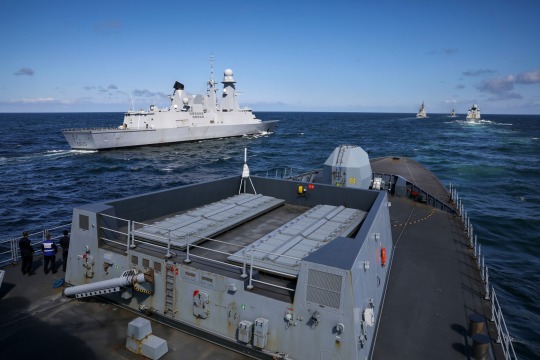
(5/25/2021) Royal Navy Type 45 destroyer HMS Dragon (D35) participates in At-Sea Demo/Formidable Shield, conducted by Naval Striking and Support Forces NATO on behalf of U.S. Sixth Fleet, is a live-fire integrated air and missile defense (IAMD) exercise that improves Allied interoperability using NATO command and control reporting structures. (Royal Navy Photo by Jim Gibson)
18 notes
·
View notes
Text

ISU-152s emerging from a landing ship during exercises, 331st Self-Propelled Gun Battalion, 55th Naval Infantry Division, Soviet Pacific Fleet, 1981.
20 notes
·
View notes
Text

Without the CMV-22, the U.S. Navy needs 15 former C-2A to carry out missions aboard the aircraft carriers
Fernando Valduga By Fernando Valduga 02/20/2024 - 20:58in Military
The uncertainty of the return of the tiltrotor V-22 to full operation is leading the U.S. Navy to rethink its plans on how to refuel its aircraft carrier fleet in the short term, with more uncertainty in the long term, and the remaining C-2A Greyhounds become essential.
The service had initially planned to retire its remaining 15 C-2A Greyhound onboard delivery (COD) aircraft in the next two years and replace them with a total of 38 CMV-22B Ospreys, which DOT&E reported "not to be operationally adequate".
“For the luck of the Navy, the C-2 Greyhound is still available,” said Vice Admiral Air Boss Daniel Cheever at a panel at the WEST 2024 conference, co-organized by the U.S. Naval Institute and the AFCEA. "Limited operational impacts at this time, but there are still operational impacts. And when you look to the future, there are significant operational impacts."

As part of the Greyhounds' planned retirement, the U.S. Navy stopped training new C-2 pilots and began to reduce spare parts and logistical support for the 60-year project.
This transition, completed on the West Coast, is now paralyzed with the grounding of the V-22 in the U.S. Marines, Navy and Air Force after the fall of a USAF Special Operations MV-22 off the coast of Japan late last year.
The grounding of the Ospreys has already been out of operation for 75 days, with no indication of how long the grounding can continue.

CMV-22B Osprey.
The suspension of operation of the tiltrotors forced the U.S. Navy to exchange the V-22 aboard the West Coast aircraft carriers USS Carl Vinson (CVN-70) and USS Theodore Roosevelt (CVN-71) for the C-2As of the East Coast Fleet Logistics Support Squadron (VRC) 40, the "Rawhides".
"The VRC-40 is currently emerging to fulfill the mission [COD] for aircraft carriers deployed in the 5ª and 7ª U.S. Fleets," says a statement from the Naval Air Forces. "There was no change in the planned retirement of C-2A for 2026."
Although there is still no change in the plan for the C-2, there is little indication of any of the forces for how long the V-22 will be able to remain out of service. After the initial grounding of the fleet, there was very limited information about the underlying cause of the grounding, in addition to a "potential material failure".
For the Marines, the situation is more terrible, said Lieutenant Karsten Heckl during the panel. He said that the operations of the 31ª Marine Expeditionary Unit based in Japan, the 26º MEU deployed in the Bataan Amphibious Ready Group and the 15º MEU that is preparing to be deployed aboard the Boxer ARG had "dramatic impacts".

Navy officers said that Marines are allowed to use Ospreys deployed aboard the Bataan ARG in specific emergency situations. A main mission of the 26º MEU, currently deployed in the Eastern Mediterranean, is the evacuation of non-combatants from Lebanon.
Last month, the Assistant Commander of the Marine Corps, General Chris Mahoney, said that the Force risks losing proficiency with the aircraft the longer it stays on the ground.
"At some point, if a pilot does not fly, if a maintainer does not turn a wrench, if an observer or crew chief is not exercising his profession, this will become a matter of competence and then there will be a matter of safety," he said.
Tags: Military AviationCMV-22B OspreyGrumman C-2 GreyhoundUSN - United States Navy/U.S. Navy
Sharing
tweet
Fernando Valduga
Fernando Valduga
Aviation photographer and pilot since 1992, he has participated in several events and air operations, such as Cruzex, AirVenture, Dayton Airshow and FIDAE. He has works published in specialized aviation magazines in Brazil and abroad. He uses Canon equipment during his photographic work in the world of aviation.
Related news
EMBRAER
VIDEO: Embraer and Sierra Nevada demonstrate A-29 Super Tucano for Ghana Air Force
20/02/2024 - 18:08
MILITARY
Leonardo tests new technologies for sustainable flight on C-27J aircraft
20/02/2024 - 15:30
MILITARY
Manufacture of 120 KF-21 Boramae jets for the South Korean Air Force will begin this year
20/02/2024 - 13:30
MILITARY
Air exercise "Spears of Victory" allowed Pakistan to evaluate JF-17 capabilities against Rafale
20/02/2024 - 09:30
MILITARY
Argentine Air Force receives second Embraer ERJ-140LR aircraft to expand its capabilities
20/02/2024 - 08:35
MILITARY
Ukraine claims to have shot down three more Russian jets, totaling six in three days
19/02/2024 - 22:07
12 notes
·
View notes
Text
My sister and I were talking about Fallout, and we were just idly considering, if you had a Fallout game set in Ireland, what would the setting be like? Considering Fallout’s particular alternate 1950s post-apocalyptic B-movie setting. How would that mesh with Ireland’s peculiarities?
(Sidenote: I’m talking specifically about southern Ireland here, and in particular small town Ireland is what I’m familiar with)
And we figured some elements of Fallout: Ireland would be:
Pre-war nuclear powered farm equipment. Tractors are the foundations of Irish society. Rusted nuclear tractors are going to be a strong setting feature.
Mutant sheep. What brahmin and bighorners are to American Fallout, sheep are going to be to Irish Fallout (well, and brahmin). Farming is huge in Ireland. And it’d be funny and/or terrifying to meet massive wandering herds of mutant sheep wandering around the landscape. That typical Irish encounter, where you have to pause on the road to wait out a farmer moving a herd of sheep, only now you’re on foot and surrounded by Fallout sheep.
Fishing fleets. While Ireland does have a military and a government, they’re not really the institutions that the American military and government are? In a post-apocalyptic setting where order broke down, the factions in Ireland are going to be significantly more localised. But certain industries would absolutely remain big enough to be factions, and the fishing industry is 100% one of them. An Irish fishing fleet stood off a Russian naval exercise IRL. So. Fallout: Ireland could definitely have a floating militarised faction based entirely on the pre-war fishing fleets.
(You might have the Rangers as a military faction. The Ranger Wing is probably the part of the Irish military that does have a mythology to it)
Speaking of factions, if national order breaks down and fractures, the two units it’s likely going to break down into are: parishes and GAA. Particularly if we’re basing it off an alternate 1950s Ireland.
Parishes: Fallout is weird about religion, and appears to mostly try to avoid it. Which … will be difficult in an Irish setting, especially if the game is located near the border, but lets say we do the Fallout thing and lose most of RL religion. What weird cult is going to replace it? And, in Ireland, the rituals that might stick will probably be things like the grottos and wishing wells and pilgrimage walks, and most of those are related to Mary (at least in Catholic Ireland). So … there might be a goddess cult? The Blue Mother. Probably with a lot of water associations. In terms of the physical art and statues and the physical rituals that might survive, a lot of it will probably feature Mary.
Doing a Fallout and avoiding religion probably will be wise in a Fallout: Ireland setting, just to avoid recreating The Troubles post-apocalyptically. Though, depending on where you set the game, you probably can have corrupted remnants of the conflict. Whether you should is a different question.
GAA: And in terms of tribes, if society devolves, in Ireland it will devolve around the Gaelic Athletic Association. Because your local club is the defining feature in Ireland, especially in the 50s. Those are your colours, those are your allegiances. The only other main contender is family, so you could also have good old fashioned familial tribes (the mammy mafia, 300 year old ghoul grannies running familial gangs), but GAA will also be a significant local focal point.
Which brings up the fun option of post-apocalyptic hurling. Because. Look. Hurling was always warrior training. Part of the myth of Cú Chulainn, how he got his name, was because Setanta, his boy self, killed a massive hound by driving a sliotar down its neck with a hurl, and became the ‘hound’ (cú) of the smith Culann (the hound’s owner) to make up for it. Remember talking to the guy in Diamond City about his post-apocalyptic interpretations of pre-war baseball? In a Fallout version of Ireland, the post-apocalyptic and pre-war versions of hurling will not be that far apart. Sliotar grenades that you launch with a hurl strike? Genuinely something several hurling teams have probably thought about IRL. Hurls will be a standard melee weapon in Fallout: Ireland.
In terms of the B-movie elements, the mutants and cryptids and cults that make up the Fallout landscape …
There’s going to be a lot of mutant horses. Irish myth is full of horses. Kelpies. Pooka. There’s going to be mutant carnivorous bog horses, and camouflaged mutant ‘ghost’ horses that can drag you across half the map. There’s also going to be mutant deer. There might also be mutant elk. Like radstags, but bigger. And quite possibly a lot more aquatic wildlife. Ireland’s an island nation. Mutant pike. Mutant seals. Mutant dolphins. Ghoul seals. Possible sentient seal people, maybe as the supermutant equivalent? Kind of merge supermutants and mirelurks, and likely call the end result Formorians.
And, speaking of Formorians, there has to be at least one enemy type with a massive eyebeam, because Balor of the Evil Eye. Think an assaultron’s eyebeam, but on something wholly organic, a supermutant equivalent. An elite Formorian variant.
There could be an interesting merging of ghouls and the sídhe, now that I think about it. The people of the barrows, the people of the mounds. The people of Ireland Before, who moved into a underground otherworld when the bombs fell. You could definitely do something with ghouls and the sídhe, in an Irish Fallout setting. And actually, if they do take more elements of sídhe, the ghoul faction might well be a respected faction, more so than many of the American Fallout games. Ireland has more of an ancestral/elder respect element going (‘back in my day’), and ghouls would be where knowledge survived. So you could very easily have a powerful scholarly ghoul faction under the banner of the Sídhe. College is a big thing in Ireland. Fallout 4’s CIT, in a Fallout: Ireland that could so easily be a ghoul faction, centred on one of the University Colleges or Institutes of Technology That could actually be a faction divide too, the humanity-focused UCs vs the technically focused ITs. You could have ghoul college factions.
Then there’s the question of where to set the game. Realistically, it’s going to be Dublin, because Fallout games tend to be centred on urban centres, and in Ireland Dublin is the city. I sort of don’t want it to be set in Dublin, but likely it would be. And you would have some interesting locations in the Dublin environs and things like the Wicklow mountains for the rest of the map. You have the airport, the port, Phoenix Park, outlying areas like Greystones, Bray, Howth, Balbriggan, Lucan, and possibly Naas or Dundalk in a DLC. You’d have the north/south divide as a possible faction boundary. Put the ghoul Sídhe in Trinity College.
(Thinking about that, actually, Ireland doesn’t have a lot of actual underground spaces. We don’t have a metro/subway/tube, almost all our transport is surface transport. So the subway stations that are such a feature of most Fallout games will not be a thing in Fallout: Ireland. But we do have older spaces. Newgrange, Knowth, Dowth, the passage tombs. Souterrains. Medieval cellars.)
It’d be fun to set it somewhere else, though. Waterford, Cork, Galway, Derry. Not Limerick. No offense to Limerick, but I don’t know if I’d want Angela’s Ashes: Fallout Edition. Although Limerick does have a lot of interesting hinterlands. So does Galway. Galway might let you use a post-apocalyptic Burren as a more alien nearby landscape.
… Anyway. That was a whole conversation. How to convert the Fallout setting and themes to a post-apocalyptic Ireland. Heh. Fallout is quite specifically America, building on 50s Americana mythology. But there are elements that would merge interestingly with an Ireland set in the same universe.
#fallout#fallout setting#ireland#post-apocalyptic settings#converting fallout for an irish setting#long rambles#fandom shower thoughts
29 notes
·
View notes
Text
Even as its members take part in Steadfast Defender 2024, NATO’s largest military exercise since the Cold War, it is clear that the alliance remains ill-prepared against Russia’s military capabilities in the Arctic. The exercise, which runs between January and May, involves more than 90,000 troops across the Atlantic and up to the Arctic and suggests that NATO has a strong and capable defense presence in the region.
However, a closer look at the capabilities of the Arctic states—which are all NATO members except Russia—reveals otherwise. Finland and Sweden’s recent membership in NATO has been heralded as a turning point in deterrence against Russia in the north. However, the countries’ proximity to northwest Russia means that their strategic focus is primarily targeted at the Baltic Sea region, where Russia has pursued a military buildup directed toward NATO’s eastern flank.
No NATO member state has ice-strengthened ships with both anti-aircraft and anti-submarine capabilities. The United States, Canada, Denmark, Finland, and Sweden have prioritized capabilities designed for other theaters, such as the Indo-Pacific and the Baltic Sea regions. Iceland, which has no standing army, only operates coast guard vessels. Norway has ice-strengthened coast guard vessels, but they are not designed for military operations.
Russia’s nuclear submarines, which are capable of launching an attack on North America, can travel from the Barents Sea through the Bear Gap between Scandinavia and Svalbard, Norway, and under the ice along the coast of eastern Greenland without being detected. This leaves big gaps in NATO’s defense posture. Russia’s war in Ukraine also gives it incentives to work with China in the Arctic, including joint naval exercises and coast guard cooperation.
NATO should not let Arctic deterrence fall by the wayside by concentrating its force posture along its eastern flank. Instead, the trans-Atlantic alliance must act urgently.
Russia’s 2022 naval doctrine raised the Arctic region to the highest priority. Between its invasion of Crimea in 2014 and 2019, Russia built more than 475 military facilities in the Arctic. Its Northern Fleet, located in the Barents Sea, accounts for around two-thirds of the Russian Navy’s nuclear strike capabilities. A multilayered network of sensors, missile systems, coastal defense systems, and electronic warfare technology protects these capabilities, including the strategic submarines.
Despite NATO Secretary-General Jens Stoltenberg sounding the alarm in 2022, the alliance lacks an Arctic strategy. Its current area of responsibility extends only to the “High North,” a less ambitious term that describes the ice-free parts of the Arctic. The term is indicative of disagreement within NATO over whether its remit goes beyond the North Atlantic.
As glaciers melt, more countries from outside the region are engaging in the Arctic, which risks further crowding the Northern Sea Route and incentivizing Russia to protect the entry and exit points to its military bastion.
Russian vulnerabilities in the Arctic have affected its strategic cooperation with China. On the one hand, Russia needs to cooperate more with Beijing—in areas such as digitalization; infrastructure; and intelligence, surveillance, and reconnaissance—to utilize the economic potential of the Northern Sea Route and protect its strategic assets. On the other hand, Russia is concerned with maintaining control of its Arctic coastline.
Moscow will cooperate with Beijing if this red line is respected. Although access to Russian facilities and ports will allow China to use its military capabilities in the Arctic, including icebreakers and semi-submersible vessels, Beijing has little interest in becoming a military power in the region. Decades of strategic coordination in Central Asia and in the Korean Peninsula have proved that China understands the benefits of not undermining Russia, even if Moscow’s geopolitical agenda is not always to Beijing’s liking.
Despite Chinese concerns over Russia’s war of attrition in Ukraine and its military-strategic cooperation with North Korea, Beijing benefits from Moscow maintaining a strong force posture toward NATO. This is especially true in the case of the Arctic, where a permanent Chinese presence would open a new front with U.S. allies at a time when Beijing is already engaged in hot spots in its own backyard.
The supply line that runs through the GIUK gap—the strategically important entrance to the North Atlantic between Greenland, Iceland, and the United Kingdom—is a vital route for U.S. and Canadian forces to deploy and send supplies to northern Europe in the event of military conflict with Russia. Moscow can currently disrupt this supply line without NATO intervention because the Nordic states in the Arctic do not have capabilities to detect Russian forces operating in the Bear Gap and off the coast of eastern Greenland.
This mismatch underscores how countries such as Norway and Denmark have limited defense budgets but major responsibilities—including manning the Arctic and Baltic regions as well as, in the case of Norway, a land border with Russia.
Such budget constraints explain the reluctance to acquire the expensive capabilities to take on responsibilities that should fall to all Arctic NATO member states. But the widespread unwillingness among all members to invest in Arctic capabilities is easily explained: NATO has focused on pushing member states to spend 2 percent of GDP on defense, and investments in capabilities such as ice-strengthened navy vessels do not count as contributions to NATO’s minimum force requirements. That comes at the cost of Arctic security, which Russia is willing to exploit.
Amid heightened tensions with Russia, it is important that NATO does not ignore Moscow’s threat in the Arctic. This is not to say that trans-Atlantic allies should engage in a massive military buildup that risks provoking a Russian military response. Russia is likely to interpret freedom of navigation operations from states that do not border the Arctic Ocean, such as the United Kingdom, France, and Italy, as an escalatory NATO presence from states that lack legitimate obligations to patrol the Arctic.
A Russia that perceives itself as vulnerable in the Arctic may respond more forcefully than is desirable from NATO’s perspective. This points to the need for the United States, Canada, Denmark, and Norway to take on more responsibility for deterrence in the region by focusing on the areas adjacent to their sovereign territories.
As it marks its 75th anniversary, NATO should come to an agreement on an Arctic strategy. For starters, it should revisit and update its minimum force requirements and allow members states to count the development of special capabilities, such as ice-strengthened frigates, as contributions to the NATO spending targets. As U.S. leaders increase pressure on other NATO member states to meet the defense spending target—ultimately requiring those states to cancel other investments in areas such as public welfare—few states can justify taking on defense expenses that do not count as part of the minimum force requirements.
Although Finnish and Swedish membership has seemingly enhanced NATO’s Arctic posture, the alliance still has a long way to go in the region. NATO must increase its footprint in the Arctic to credibly deter Russia’s military force posture.
3 notes
·
View notes